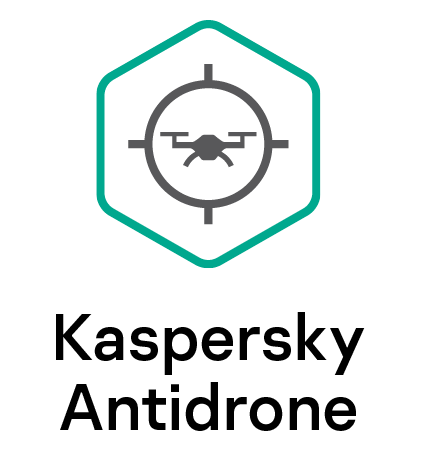While widely rated ‘zero stars’ by humans, 2020 was a great year for drones. US market research firm Research and Markets estimate the drone market is worth 22.5 billion US dollars and predicts it will double in the next five years. Much-awaited regulation in countries like China, India and the US in recent years has added clarity on how businesses can use drones. The threat of COVID-19 saw public health organizations burst onto the scene, using drones to deliver medical supplies, spray disinfectant and conduct remote temperature-checking. A Swiss robotics firms has even been training drones to make high storey street art.
The drone’s rapidly rising star also raises concerns for physical and cyber business security.
What are the risks companies face, and what can they do about them?
New developments in drone technology
Drones have been growing in sophistication in recent years, changing the picture of drone-based threats. So what’s been happening out there?
Drones can now use ‘computer vision:’ Machine learning that lets them scan and recognize an object and follow or identify other places where it occurs. There are now drone add-ons that can transmit real-time high-definition images and video. Drones can also do more thanks to fast and reliable 5G spreading around the globe, increasing how long and far a drone can travel without returning to base and allowing for automatically adapting journeys in response to real-time information.

DETECT, CLASSIFY AND NEUTRALIZE DRONES
Antidrone System
Kaspersky’s stand-alone solution that stops drones
Which businesses and activities are most at risk from drones?
There are four main ways drones can threaten businesses and other organizations. There’s collision: Where drones collide with objects or other aircraft, causing damage and endangering lives. Criminals can use drones that carry weapons to attack people or property directly. Espionage includes illegally collecting private information, for example, by using the drone’s sensors, photography or video. Finally, there’s smuggling: criminally transporting goods.
The most well-known drone security incidents involved potential or actual collisions. Drone sightings near runways led to the disruption of around 1,000 flights at Gatwick Airport in London in 2018. Although the airport’s swift action in this instance prevented damage, there have been numerous collisions and near misses between drones and aircraft in the past. Frankfurt Airport shut down several times in 2020 after drone sightings.
Press photographers have used drones to breach personal privacy. The Los Angeles County Superior Court ruled against a press agency that used a drone to photograph the Duke and Duchess of Sussex’s baby within the confines of their home.
Law enforcers know criminals are using drones to move contraband. Drug smugglers are ‘getting high’ – in 2020, Singaporean police intercepted a drone being used to traffic class A controlled drugs between Singapore and Malaysia, leading to several arrests.
Non-profit policy researchers RAND Corporation identifies one more kind of drone attack: When cybercriminals compromise and disable or take over organizations’ drones. In 2020 they looked at the cyber threat drones pose to US industry and homeland security. They noted many potential threats from drone compromise, including creating “visual blind spots in detection of smuggling or other nefarious activities at borders and ports,” reduced “capability to identify, reach or supply individuals in peril or medical distress in disaster zones” and the threat of “cyber-physical attack to damage the critical infrastructure.” They urged the Department of Homeland Security to “prioritize the most critical vulnerabilities and find ways to close attack vectors and protect attack surfaces.”
How to protect your business from attack by drone
While drones are famously agile and can go where humans cannot, they’re far from unstoppable. ‘Ethical hacker’ teams have found several effective ways to disable nefarious drones, like confusing them with ultrasound or jamming them with radio waves.
Many businesses and organizations are adopting antidrone systems, especially airports, industrial premises and public event organizers.
Market research firm Forrester recommends businesses consider using these in its 2020 report Navigate the digital ecosystem of commercial drones: “Put security and governance on your drone adoption agenda. Drones introduce new risks, such as hacking, business disruptions and privacy violations. Chief Information Officers (CIOs) must work with security pros to identify potential security issues and track regulatory changes closely.” It recommends considering antidrone solutions to reduce the threat of unauthorized drones.
How do antidrone systems work?
Antidrone systems combine hardware and software, detecting drones in flight by scanning with radar, lidar and radio. After analyzing the drone using audio, video and thermal information, they jam it by interrupting its controlling signal. Detection and analysis happens in seconds.
Antidrone systems can be customized for any scale of territory. The shape and size of the area the business needs to control decides determines what technology to use, for example, panoramic cameras work for small-scale sites (up to 300 meters or 980 feet) and in areas where building heights vary. Radar-based detection is best for large sites outside built-up areas. Antidrone system suppliers give examples of how they’ve set up systems for the needs of an airport, industrial estate and public events.
If your organization uses drones, take these six security actions to prevent drone compromise. These include regularly updating the drone’s firmware and making sure your base station app has a strong password.
We should expect to see criminals using ever-more-sophisticated drones to cause chaos and compromise in the coming years. The good news is, businesses and public bodies can do things to protect their property, people and assets. Drones are changing the way we do business. Properly secured, in future we’ll see even more exciting drone innovation take to the sky.
